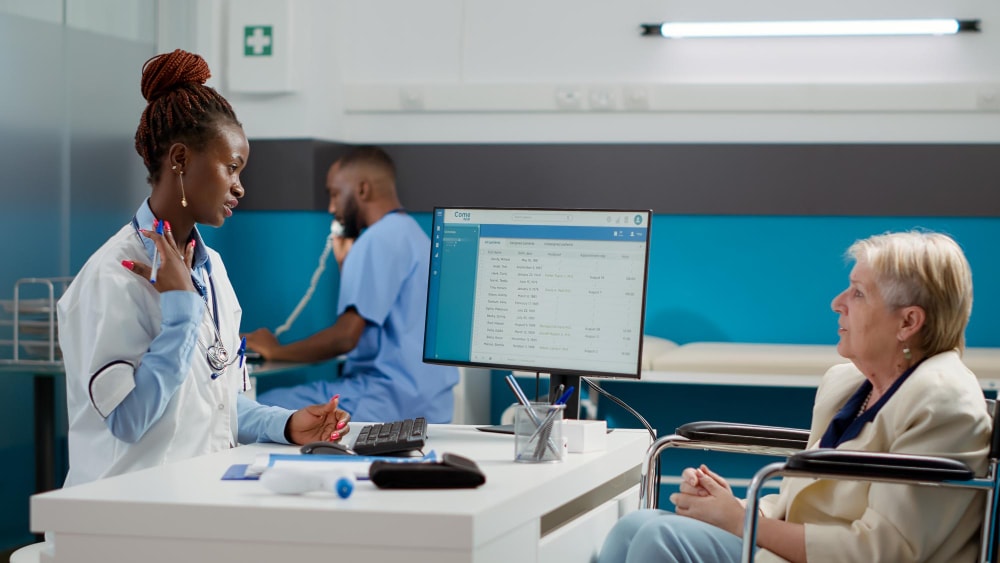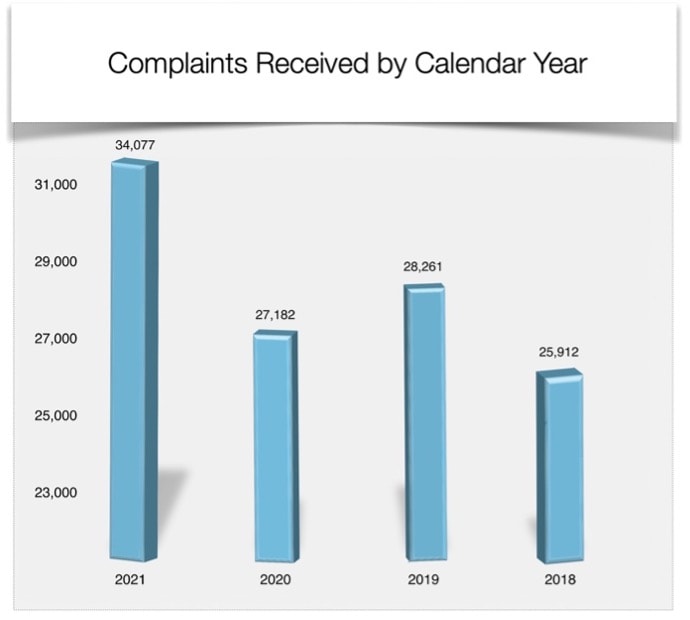- Solutions
Solutions
Cloud Based Solutions
Flexible, feature-rich cloud communication services.
On-Premise Solutions
On-premise PBX systems with infrastructure you control.
- Products
Products
Cloud Phone System
Find a hosted VoIP system that works for you.
Premise Based Phone Systems
Keep your business phone system inside the business.
SIP Trunking
Transition your traditional phone system onto the internet.
Edge Devices and Network Switches
Ensure safe, seamless network connectivity.
Managed Services
Lighten your workload and leave network upkeep to us.
- Cabling
- Industries
Industries
- Cars and Dealerships
- Cities, Towns & Municipalities
- Construction
- Education
- Finance & Insurance
- Food & Beverage
- Health Care
- Law
- Manufacturing
- Real Estate
- Religious
- Retail
- Support
Support
Resources
Take a deeper dive into our industry expertise.
FAQ’s
Have a question? We’ve got the answer.
Contact Us
Reach out and we’ll get right back to you.
- About Us
About Us
Why Choose Us
See why our customers stick with Statewide.
Our Team
Meet our skilled and sincere team of experts.
Careers
If you’re tech-centric and ready to help, you’ll love it here.
Success Stories
Read about the real life solutions we provide our clients.
News
Stay up to speed on our latest articles and blogs.
Our Partners
See who we team up with to deliver world-class solutions.
Bizfon
Click here if you’re a former Bizfon customer.
SCI Networks
See how SCI Networks became Statewide Communications.
About UsNewsMay 13, 2025Why Unified Communications Are Perfect for Healthcare Team Collaboration
When you’re running a healthcare practice, clinic, or hospital, you know better than anyone that every interaction has the potential to be devastating. Regardless, if you work in a traditional ER or a rural clinic, the possibility is always there, looming.
The intent isn’t to create a false sense of danger but to acknowledge the reality of working in healthcare. There’s no room for a lapse in communication because every second counts. From nurses coordinating patient care to administrative staff managing appointments, from a seemingly mundane call through the non-emergency line that becomes a potential crisis in an instant, reliable and secure communication is vital for all parties involved.
How often have you faced a situation where a message didn’t get to the right person, or your outdated phone system suddenly went down, creating chaos? The number of times a problem has occurred like that is probably far more than you’d like it to be, and that’s exactly why Unified Communications (UC) is becoming the gold standard communication tool in healthcare. But here’s a glimpse into the rest of the article: UC solutions benefit healthcare teams by streamlining communication, reducing errors, and improving coordination. Effective communication helps healthcare teams achieve better patient outcomes. Continue reading to learn exactly why UC could be the next great step in communication for your patients and staff.

What is Unified Communications?
Unified Communications (UC) refers to the integration of multiple enterprise communication tools and services, such as instant messaging, presence information, voice, and video conferencing, into a single interface. UC solutions aim to improve user experience and productivity by allowing users to switch seamlessly between different modes of communication in a single session. With the rise of remote work, UC has become essential for businesses to stay connected and collaborative. By implementing UC solutions, companies can enhance their business communications, streamline processes, and increase productivity. For example, Microsoft Teams is a popular UC platform that enables seamless communication and collaboration among team members.

The Cure for Disconnected Care Teams? Unified Communications
Unified Communications is a solution that brings together all your communication channels—voice, video, messaging, and conferencing functions—into one easy-to-manage platform. Additionally, UC integrates with business applications to streamline healthcare workflows. It’s specifically designed to enhance team collaboration, making it ideal for healthcare teams who need to respond quickly and accurately every single day.
At Statewide Communications, we understand healthcare. We’ve seen firsthand how the right tools transform workflows and improve patient outcomes. With UC, you can:
- Simplify your communications
- Enhance patient care
- Boost staff productivity
Why does this matter? Specifically for healthcare, standardization is a key piece of the benefits. You might need a nurse to cover another clinic, and the communications infrastructure is completely different, and that person coming to help is causing delays. UC allows healthcare administrators to have better control over communication channels and workflows, reducing chaos and improving efficiency.
Learn more about our Unified Communications solutions.

How Unified Communications Streamlines Patient Care
We’ve all seen the dramatic scene from the countless TV medical shows when a patient arrives with an emergency. The intake nurse needs immediate assistance, and it’s quickly determined they need a specialist who’s at another location. Traditionally, they would pick up the phone, dial a number, hope someone answers, and potentially deal with several transfers. This slow communication will delay critical care.
But your medical office isn’t a drama-filled, made for TV endeavor, this is real life with real problems and efficiency is the ultimate goal. Unified Communications easily and instantly lets your nurse see who’s available, sending a quick message or making a call directly from their computer or mobile device.
No waiting. No guessing. Just fast, direct communication that gets patients the help they need right away.

Better Team Collaboration Tools, Better Outcomes
UC provides team collaboration tools that go beyond simple messaging. Staff can share files securely, hold virtual meetings, and collaborate on patient care plans in real-time from any device. By collaborating effectively, healthcare teams can enhance internal communication and teamwork, ensuring that everyone works together seamlessly toward shared goals.
For example, during the COVID-19 pandemic, healthcare providers quickly realized how valuable video conferencing could be. Doctors could conduct virtual consultations, keeping both patients and medical staff safe. With UC, your team can seamlessly pivot to telehealth whenever necessary, without missing a beat. Additionally, effective conversation within teams is crucial for collaboration and patient care, as it allows for asynchronous communication and saves conversation histories for later reference.
For our healthcare system, proper communication channels that meet the moment are priceless, and Unified Communications is a vital collaboration tool built to meet every moment. UC tools also facilitate shared projects among healthcare teams, enabling groups of employees to work together harmoniously towards common goals and ensuring a united purpose in achieving tangible results.
Implementing Unified Communications in Healthcare
Implementing Unified Communications in healthcare can significantly improve patient care and outcomes. By leveraging UC solutions, healthcare professionals can collaborate more effectively, share medical records, and communicate with patients remotely. For instance, video conferencing can be used for remote consultations, reducing the need for in-person visits which saves time for clinicians and patients.
Additionally, collaboration tools like instant messaging and presence information can help healthcare teams respond quickly to emergencies and critical situations. UC can also facilitate seamless communication between healthcare providers, patients, and families, regardless of language barriers, using speech-to-speech translation and automatic speech recognition technologies.
Moreover, UC can integrate with electronic health records (EHRs) and other healthcare systems, enabling healthcare professionals to access patient information through real time file sharing and collaborate more efficiently.
Security You Can Trust
In healthcare, data security is everything. Since the pandemic, HIPAA regulations have become mainstream knowledge for most people. Unified Communications solutions are built with enhanced security protocols to ensure patient information stays confidential. According to a Healthcare IT News report, in 2023, 88.7 million patient records were compromised due to ransomware attacks. Statewide Communications emphasizes security with:
- Secure messaging and video calls
- Encrypted data storage
- Compliance with HIPAA regulations
The importance of multi-tiered data security models in protecting patient information cannot be overstated. Your staff and patients will have the confidence that they can communicate freely, knowing health data remains protected. Understanding the various elements of UC security, such as secure messaging, encrypted data storage, and compliance with regulations, ensures comprehensive protection and compliance. For reference, here are the official complaints received provided by the US Department of Health and Human Services (HHS).

Source: https://www.hhs.gov/sites/default/files/complaints-received-by-calendar-2018-2021.jpg
New Technology and Innovation in Healthcare
The healthcare industry is witnessing a significant transformation with the advent of new technologies and innovations. Unified Communications is one such technology that is revolutionizing the way healthcare professionals communicate and collaborate. With the help of UC solutions, healthcare providers can leverage technologies like artificial intelligence, machine learning, and the Internet of Things (IoT) to improve patient care and outcomes.
For example, UC can enable seamless communication between medical devices, healthcare professionals, and patients, facilitating real-time team collaboration, monitoring, and response to critical situations. Additionally, UC can facilitate the sharing of medical records and images, enabling healthcare professionals to make informed decisions and provide better care. The future of healthcare will be shaped by technologies like UC, which will enable more efficient, effective, and patient-centric care.
Real-Life Success Stories: Why UC Matters
Take, for instance, our client Christina from BILH Primary Care. After switching to Statewide’s Unified Communications system, she shared how it benefited the entire company:
“We went live with them for our new phone system, and I can’t say enough great things about them. Their professionalism, consistent and timely follow-up, and problem-solving response time could not be better!”
Additionally, UC tools have assisted with effective project management, enabling employees to see their colleagues’ work and streamline communication. At Statewide Communications, we take pride in supporting our community, but especially those who help others. This type of success story isn’t unique; it’s our standard.
Read more Statewide Communications Success Stories

Measuring Success with Unified Communications
Measuring the success of Unified Communications solutions is crucial to understanding their impact on business processes and productivity. By tracking key performance indicators (KPIs) like user adoption, call quality, and customer satisfaction, any industry can evaluate the effectiveness of their UC solutions. Additionally, measuring business productivity and collaboration metrics, such as the number of meetings, conversations, and files shared, can help businesses understand how UC is improving their operations.
UC solutions can also provide analytics and insights on user behavior, helping businesses identify areas for improvement and optimize their UC strategies. By measuring the success of UC solutions, companies can refine their communication strategies, improve employee satisfaction, and drive business growth. For instance, a senior consultant can use UC analytics to identify trends and patterns in user behavior, providing valuable insights to inform business decisions and improve communication strategies.
Overcoming Common Objections
We often hear hesitations from healthcare leaders who wonder if switching to Unified Communications is worth the effort. In short, it’s entirely worth it, but let’s address a few common concerns:
Concern #1: “Isn’t it complicated to switch systems?”
Actually, it’s simpler than you think. Our process at Statewide starts with understanding your specific needs. We handle the training and implementation personally, ensuring your transition is smooth, with minimal disruption.
Concern #2: “Will this be expensive?”
Think about the hidden costs you’re already paying: downtime from outdated systems, inefficient communication, and frequent repairs. Unified Communications can reduce these unexpected costs and even lower your overall spending by consolidating multiple communication tools into one affordable package.
Concern #3: “My staff isn’t very tech-savvy.”
Unified Communications tools are user-friendly, and most people who have used a smartphone will pick them up relatively quickly. At Statewide Communications, we ensure everyone on your team receives thorough training and ongoing support. Our hands-on approach means your staff can confidently use the new technology and communication features from day one.
What Sets Statewide Communications Apart
Unlike other telecom providers, Statewide Communications doesn’t sell you a service and disappear, leaving you to fumble through alone. We provide ongoing, personalized support because your goals are our goals. As David Hull, COO of Statewide Communications, emphasizes:
“What really made me fall in love with telecom was being able to provide a service and really help people, serving them and making their lives easier.”
Our team is here to keep your healthcare practice running smoothly every day so that you can focus on patient care, not communication hiccups.
Take the Next Step with Unified Communications
The time has arrived to move forward and transform your healthcare team’s communication. Let Statewide guide you through the process and help you properly embrace Unified Communications. Soon, you’ll be well on your way to enhanced team collaboration, improved productivity, and better patient outcomes.
Discover how Unified Communications can help your healthcare team today.
Let’s make real time communication simple, effective, and secure—exactly what your healthcare practice deserves. Contact Statewide Communications today for a FREE consultation and discover how UC brings your organization into the future.
You may also like
Jul 01,2025
Retail Resilience: Must-Have Telecom Features Like Call Analytics and Disaster Recovery
Communication systems are the backbone of daily operations in retail. Technology advancements have transformed communication systems in retail and other industries, enabling more efficient and data-driven processes. Retail businesses rely heavily on the right telecom features to keep their operations running and customers satisfied. Whether it is managing incoming customer calls, coordinating with suppliers, or […]
Read MoreJun 16,2025
Why Cloud PBX is the Right Solution for Your Business
Do you run a business in Massachusetts or New England where you’re frustrated with an outdated phone system that feels more harmful to your operations than helpful? Maybe you’re tired of calls dropping or dealing with a complicated setup that isn’t intuitive to maintain, and have spent countless hours trying to extend the life of […]
Read More



















